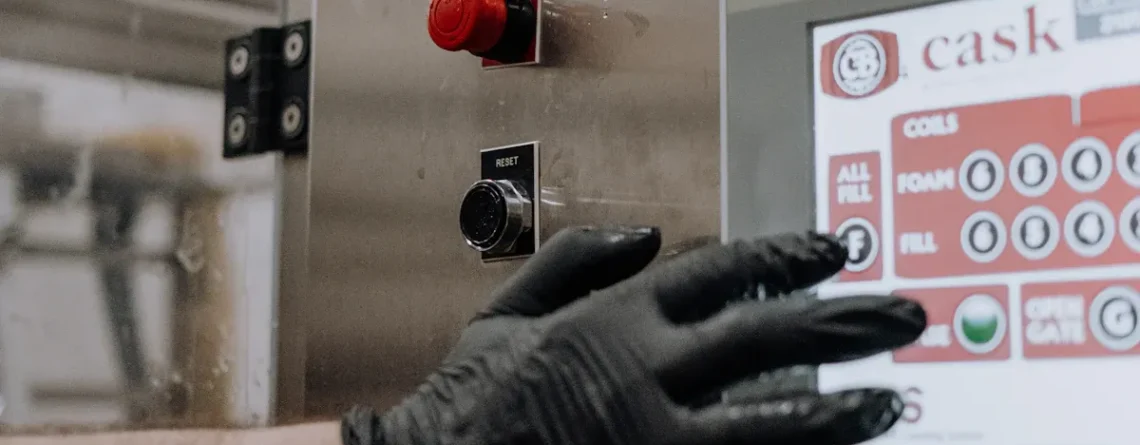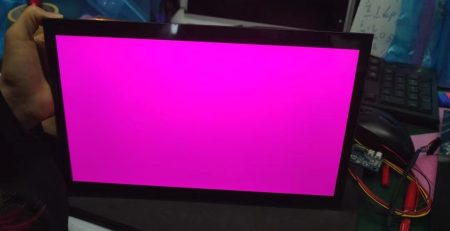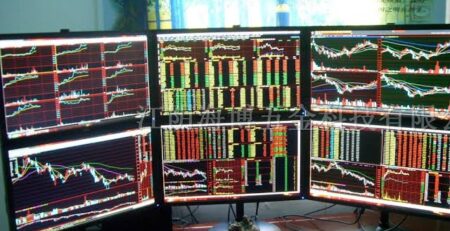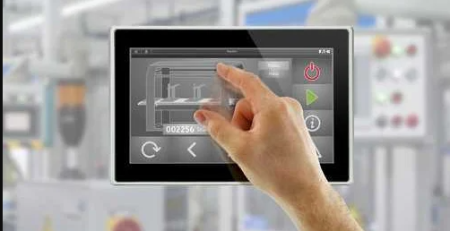In modern factory operations, Industrial Human-Machine Interfaces (HMIs) and control panels are much more than simple devices for displaying information or entering data. They are strategic core components for ensuring manufacturing asset reliability, improving Overall Equipment Effectiveness (OEE), and reducing high-risk human error.
The importance of industrial HMIs comes from their industrial-grade durability, deeply optimized human factors engineering, and their role as essential information hubs in industrial automation and digitalization (Industry 4.0) strategies.
This report provides an in-depth analysis of the key value of HMIs in ensuring operational continuity, improving efficiency, and serving as a foundation for future factory architecture. For factory executives seeking modernization and operational excellence, evaluating HMIs should be based on a strategic view of Total Cost of Ownership (TCO). They should prioritize integrated platforms with superior durability, simplified navigation, and powerful real-time diagnostic capabilities.
I. Critical Functions and Strategic Positioning of Industrial HMIs
1. HMI’s Role in the Production Control Loop
Modern industrial HMIs, particularly industrial touchscreen displays, occupy a central and integrated position in factory automation systems. Their significant advantage is the ability to act as both input and output devices. This replaces traditional separate displays, keyboards, and mice, providing a streamlined and powerful operational interface.
This integration not only saves valuable workstation space but also improves operational ease and speed. As industrial automation increases, HMIs are key tools for quantifying, tracking, and regulating complex industrial processes. They give operators intuitive control over complex systems and enable the use of new technologies. The ultimate goal is to increase production efficiency and productivity greatly. The multi-tasking ability of HMIs has significantly changed industrial computing, similar to how user-friendly interfaces speed up processes in other sectors.
2. Information Gateway from Operator to Decision-Maker
The real-time information provided by HMIs is crucial for enhancing factory agility and flexibility. With instant feedback on equipment status and production data, operational teams can quickly respond to changing market demands or adjust production plans based on live data. This allows factories to use adaptable control strategies and advanced process control models, maximizing the value of equipment assets.
Furthermore, HMIs have a deep impact on reducing project risk and operational costs by providing a universal factory-level platform and simplified operational tools. A standardized HMI platform improves knowledge transfer, reduces the time and resources needed for operator training, and helps lower spare parts inventory, thus controlling overall costs.
Automation systems are becoming more complex. Operators need to manage them through a centralized interface. Therefore, if the HMI design is flawed or its reliability is low, it immediately becomes a bottleneck for the entire automation system’s performance and reliability. The strategic position of the HMI is thus elevated. It is no longer just a simple peripheral interface, but a key control point that directly determines the actual efficiency output of expensive and complex automation devices.
II. Human Factors Engineering: Reducing Error and Enhancing Safety
1. Analysis of High-Risk System Failures Caused by Poor HMI Design
In analyzing complex system failures, human error remains the most complex and difficult factor to understand. Research shows that human error causes 60% to 80% of complex system failures, and can be as high as 96% in simpler systems. Major historical accidents deeply emphasize the need to understand the mechanisms leading to disasters and the impact of human intervention when designing complex human-machine systems.
Many factors affect operator reliability. Cognitive errors, system complexity, workload, and the quality of the HMI itself all have a significant influence. Therefore, the quality of HMI design directly determines an operator’s ability to make correct decisions under pressure or abnormal conditions, which in turn affects the entire production system’s safety.
2. Core Principles of Industrial Interface Design
To minimize the probability of human error, industrial HMI design must strictly follow human factors engineering principles:
- Intuitiveness and Low Cognitive Load: An excellent user interface must be highly intuitive. This means all information and control elements should be where users expect them, using familiar patterns and a clear visual structure. In industrial environments, using standardized graphics and intuitive layouts to avoid unnecessary interpretation helps reduce the operator’s cognitive workload. This is a basic requirement for improving operational reliability.
- User Control and Exception Management: The HMI must be designed to make users feel comfortable and give them a sense of control over the operation process. Operators need simple navigation functions to efficiently manage various abnormal situations. For example, allowing users to easily undo actions or use “breadcrumb trails” reduces the negative consequences of mistakes.
- Feedback and Error Mitigation: The key is communication between the system and the operator. The HMI must provide immediate and clear feedback, informing the user that an action is in progress. More importantly, when a system fails or an operation is incorrect, the HMI must provide instant, informative, and constructive error messages or feedback. This guides the user toward the next corrective action, minimizing operator frustration and confusion.
Given that high-risk system failures mainly stem from human error, and these errors are directly related to high cognitive load and system complexity, a well-designed HMI uses intuitive graphics and clear feedback to effectively reduce operator workload and improve operational reliability. Therefore, good HMI design is not just an efficiency tool. It is an essential part of the factory safety system’s “defense-in-depth” strategy, effectively protecting manufacturing assets from operational errors.
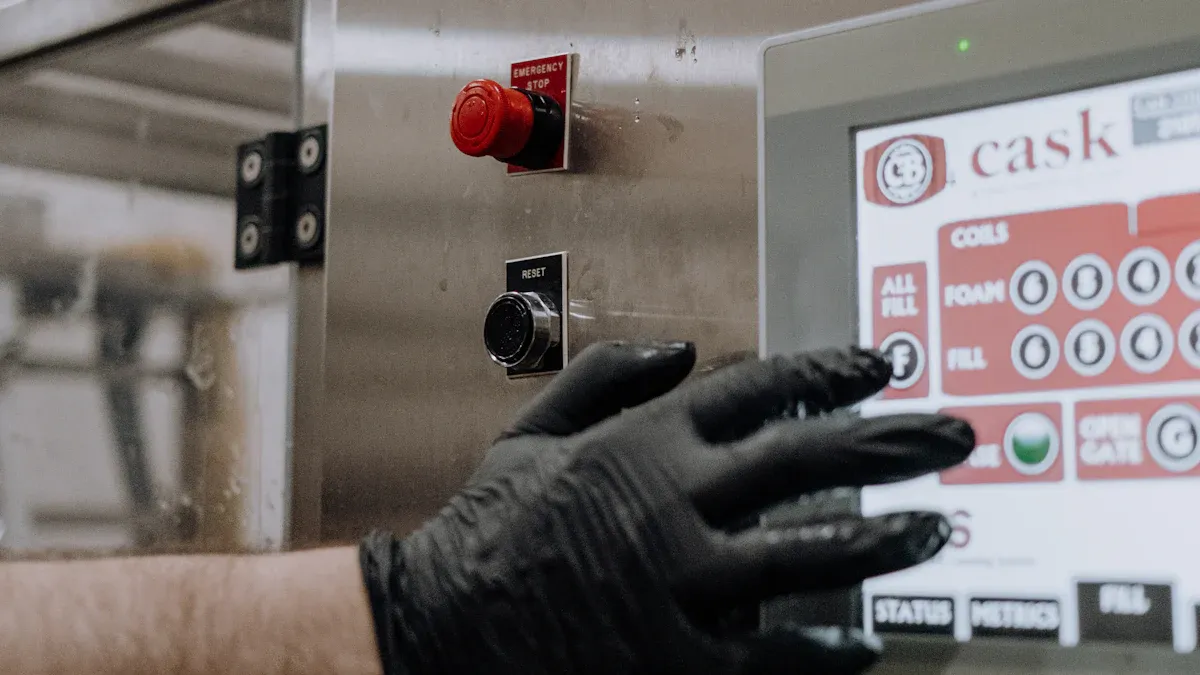
III. The Necessity of Industrial-Grade Hardware: Reliability and Adaptability
1. Harsh Industrial Challenges and Durability Requirements
Unlike consumer-grade displays for homes and offices, industrial HMIs must meet the demands of harsh industrial environments. Factory floors often have extreme temperatures, high humidity, vibration, and shock. Industrial touchscreens need a rugged design to withstand high impact shock and high vibration ratings.
Additionally, industrial HMIs must have strong resistance to contaminants. They are designed to resist common industrial pollutants like dirt, oil, grease, and spills of liquids and food. This is achieved by using a sturdy, sealed glass enclosure to protect the sensitive internal mechanical layers. This focus on durability ensures reliable information transfer and maintains system operation even in rough or potentially dangerous conditions. This is vital for the success of critical tasks.
IV. Industrial Touchscreen Technology Comparison and Selection
Rising industrial automation demands have driven the adoption of touchscreen technology, replacing traditional keyboards and pointing devices that are less reliable in harsh environments. Different touchscreen technologies have various strengths and weaknesses for industrial applications:
Projected Capacitive (PCAP) technology is the preferred choice for modern industrial HMIs. It typically embeds IC chips and transparent electrode films in a glass panel, providing excellent image clarity and high resistance to surface contaminants. Its key features include high sensitivity and multi-touch functionality. Importantly, PCAP technology overcomes the limitation of traditional capacitive screens that cannot be used with gloves. Its high sensitivity allows operators to work while wearing gloves in wet or dirty environments.
Surface Capacitive technology does not support glove use and requires a special stylus. It has good durability and high image clarity but does not support multi-touch.
Resistive technology supports glove use (activated by pressure) but has poor scratch resistance. It tolerates dust, water, and grease but has low visibility in sunlight and does not support multi-touch.
Surface Acoustic Wave (SAW) technology does not work with hard objects and has the highest damage resistance. However, it requires a clean surface and is susceptible to water. It offers high image clarity but no multi-touch.
Infrared (IR) technology supports glove operation and is not sensitive to surface touches. But it is susceptible to grease and dust. It provides the best image quality but does not support multi-touch.
Although the initial purchase cost of industrial-grade displays is usually higher than consumer-grade products, they are specifically designed for high durability and resistance to shock and contamination. This reduces the need for frequent replacement and repair due to environmental factors. This long-term durability and reliability in critical tasks effectively avoids costly catastrophic downtime. Therefore, in the long run, industrial HMIs demonstrate higher cost-effectiveness by reducing the Total Cost of Ownership.
V. Operational Benefits and Return on Investment Justification
1. Cost Savings Through Improved Efficiency
Industrial touchscreen technology significantly improves operator productivity by providing easy-to-use technology and intuitive interfaces. Workers can deliver results faster and more accurately, even under challenging conditions. The integrated and streamlined design of HMIs saves valuable console space and helps keep workstations tidy. Thanks to the sturdy glass panels and open-frame designs, these devices are easy to clean and maintain, making them ideal for harsh industrial environments that require frequent operation.
2. Impact of System Modernization on Maintenance and Diagnostics
HMI upgrades are often a key part of factory control system modernization projects. For example, one dairy manufacturer faced the constant threat of downtime from outdated RSView32 visualization software and obsolete PLCs. They undertook a comprehensive automation upgrade. By moving to a modern platform, the factory restored operational reliability.
The modern platform significantly improved maintenance procedures and troubleshooting efficiency. The new integrated engineering environment and platform support advanced diagnostics and real-time monitoring capabilities. This greatly simplifies maintenance processes and shortens the Mean Time To Repair (MTTR). Furthermore, using a universal factory-level platform and advanced security features protects the automation investment and the facility’s intellectual property. It also prevents unauthorized system changes, safeguarding future operations.
From a strategic perspective, HMI modernization is an effective hedge against “legacy technology risk.” Many factories still rely on obsolete systems without manufacturer support, leading to scarce spare parts and vulnerable production. Upgrading the HMI and visualization software is often the first step in a comprehensive modernization initiative. The return on investment comes not only from small efficiency gains but, more critically, from eliminating the risk of catastrophic downtime due to technological obsolescence.
VI. HMI’s Indirect Contribution to Overall Equipment Effectiveness
HMIs indirectly but powerfully enhance a factory’s OEE by supporting several key operational dimensions.
In Safety, HMIs help reduce operational error rates, avoiding catastrophic consequences, protecting manufacturing assets, and aligning with the “defense-in-depth” strategy. This is especially important considering human error’s significant role in system failures.
In Availability, the reliability and durability of industrial-grade hardware reduce downtime caused by environmental factors and ensure a long functional life. Industrial components can withstand extreme temperatures, vibration, oil, and shock.
In Maintainability, enhanced diagnostics and real-time monitoring functions shorten the MTTR and improve troubleshooting efficiency. Modern platforms provide advanced diagnostic and real-time monitoring capabilities.
In Efficiency/Productivity, simplified input and process integration speed up workflows and improve the accuracy and speed of result delivery. This is achieved through integrated input/output devices and user-friendly technology enabling high-speed operation.
VII. Future Trends of Industrial HMIs: Connectivity and Enhanced Experience
1. Distributed HMI Architecture in Industry 4.0
In the context of Industry 4.0, HMI architecture is undergoing a fundamental shift. Traditional centralized control panels are evolving into distributed, more human-centered systems. The core of this new architecture is support for wireless connectivity and portable devices. This allows every employee in the factory to have their own HMI, connecting wirelessly to the various assets they control. This distributed control model greatly improves operational response speed and flexibility.
2. Mobile HMIs and Remote Monitoring
Human-robot collaboration supported by portable devices is a hallmark of the new era. Mobile HMIs give operators greater freedom within the factory, allowing them to perform real-time monitoring and operations at the actual location of the equipment and processes. Furthermore, the ability of mobile HMIs to be customized for specific industrial applications and adapt to various situations further enhances operational convenience and high performance.
3. Application of Augmented Reality in Industrial Operations
Augmented Reality technology has transformative potential in the industrial HMI field. AR allows engineers and technicians to access data analysis and system status in real-time via visual overlays while on-site. This means personnel can complete complex installation, operation, troubleshooting, or mechanical system repairs without the need for long-distance travel. The application of AR technology significantly reduces maintenance-related costs, time, and product lifecycle expenses. More advanced AR technologies are expected to emerge in the future.
Future HMIs are transitioning from mere “control tools” to “guidance systems,” democratizing knowledge. Traditional HMIs required high levels of operational training and experience, making it difficult to quickly transfer skilled workers’ knowledge. Mobile HMIs and AR technology effectively provide less experienced technicians with “expert-level guidance” on-site through real-time data and visual overlays. This development trend effectively “embeds” operational knowledge into the interface, reduces reliance on highly specialized human capital, and significantly improves the training efficiency and operational accuracy of new employees.
VIII. Conclusion and Implementation Recommendations
The importance of industrial human-machine interfaces and control panels in factory machinery operation is reflected in their triple strategic value: First, as an accelerator of operational efficiency, enabling high-speed, high-performance processes through integrated input/output functions and user-friendly design. Second, as a guardian of system safety, reducing human error through strict human factors engineering principles and protect high-risk systems. Third, as a core enabling technology for Industry 4.0 strategy, it lays the foundation for future factory operations by supporting distributed control, mobile connectivity, and augmented reality applications.
To fully leverage the value of HMIs, it is recommended that factory management and engineering teams consider the following implementation strategies:
- In Hardware Priority Assessment, focus investment on HMIs that need to work continuously under extreme environmental conditions to maximize reliability and long functional life.
- In Technology Path Selection, given the requirements for glove operation and durability in industrial environments, prioritize Projected Capacitive touchscreen technology with its high sensitivity, multi-touch support, and strong contaminant resistance.
- In Human Factors Design Strategy, implement design principles based on human factors engineering. Ensure intuitive interfaces, provide clear feedback, and implement robust error-handling mechanisms. This minimizes the probability of human error and treats the HMI as a tool for reducing operational risk.
- In Future-Oriented Architecture Planning, plan and deploy HMI platforms that support wireless connectivity, mobile operation, and AR applications. This lays a solid foundation for the distributed control and remote maintenance of the more flexible, efficient, and knowledge-embedded Industry 4.0 era.
We hope you found these touchscreen or panel PC fundamentals informative. Goldenmargins offers a broad selection of Industrial Touchscreen Monitors and Touch Panel PCs in various sizes and configurations, including medical-grade touch screens, sunlight-readable touch screens, open-frame touch screens, and waterproof touch panels, as well as other unique touchscreen or panel PC designs. You can learn more about our services here or by calling us at +86 755 23191996 or sales@goldenmargins.com.


